A Continuously Exposed Piece of Film Without Edits or Cuts is Called
 | Glossary Illustrated C - 3 |
 Example: the newsreel "News on the March" prologue to Citizen Kane (1941); also the commentary provided by critic Roger Ebert, or film directors Peter Bogdanovich or Martin Scorsese on special editions of DVDs
Example: the newsreel "News on the March" prologue to Citizen Kane (1941); also the commentary provided by critic Roger Ebert, or film directors Peter Bogdanovich or Martin Scorsese on special editions of DVDs
 Example: the clever composition of frames in The Sixth Sense (1999).
Example: the clever composition of frames in The Sixth Sense (1999).
(rock or comedy)
(or continuous)
refers to action moving through multiple locations without interruptions; it usually refers to the degree to which a film is self-consistent without errors, jump cuts, or mis-matched shots and details; the final edited structure of a completed film includes events or scenes/sequences arranged as if they had occurred continuously, when, in fact, they were shot out of sequence; a system of editing was developed in the early 20th century to provide a continuous and clear movement of events/images in a film; a continuity cut refers to a editing cut that takes the viewer seamlessly, unobtrusively, and logically from one sequence or scene to another, to propel the narrative along; a blooper or flub is a continuity error
 Example: Error in continuity in Pretty Woman (1990) during the breakfast scene, in which Julia Roberts is first eating a croissant that quickly switches to a pancake; or the view of a gas cartridge on a Roman chariot in Gladiator (2000).
Example: Error in continuity in Pretty Woman (1990) during the breakfast scene, in which Julia Roberts is first eating a croissant that quickly switches to a pancake; or the view of a gas cartridge on a Roman chariot in Gladiator (2000).
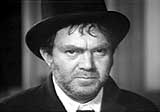 Examples: minor contract players included Ward Bond, Thomas Mitchell (pictured here as drunken Doc Boone in Stagecoach (1939)), Henry Travers, Wallace Ford, Beulah Bondi
Examples: minor contract players included Ward Bond, Thomas Mitchell (pictured here as drunken Doc Boone in Stagecoach (1939)), Henry Travers, Wallace Ford, Beulah Bondi 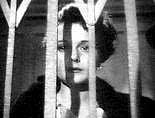 Example: Film noir is expected to be a dark, pessimistic, shadowy-filmed story about human betrayal or corruption, such as The Maltese Falcon (1941) (pictured); documentaries are expected to usually include factual information and interviews
Example: Film noir is expected to be a dark, pessimistic, shadowy-filmed story about human betrayal or corruption, such as The Maltese Falcon (1941) (pictured); documentaries are expected to usually include factual information and interviews  Example: as a result of The Kid (1921) opposite Charlie Chaplin, 6-year old child actor Jackie Coogan was one of the most highly-paid actors in Hollywood, but lost his earnings to his exploitative parents
Example: as a result of The Kid (1921) opposite Charlie Chaplin, 6-year old child actor Jackie Coogan was one of the most highly-paid actors in Hollywood, but lost his earnings to his exploitative parents (or wardrobe) and costume design
 Example: Superman: The Movie (1978) (pictured); also films with important wardrobe elements include Cabaret (1972), 3 Women (1977), Ed Wood (1994), and Hedwig and the Angry Inch (2001)
Example: Superman: The Movie (1978) (pictured); also films with important wardrobe elements include Cabaret (1972), 3 Women (1977), Ed Wood (1994), and Hedwig and the Angry Inch (2001)
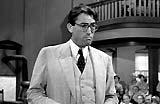 Examples: The Life of Emile Zola (1937), Adam's Rib (1949), 12 Angry Men (1957), Witness For the Prosecution (1957), Anatomy of a Murder (1959), Compulsion (1959), Inherit the Wind (1960), Judgment at Nuremberg (1961), To Kill a Mockingbird (1962) (pictured), The Verdict (1982), A Soldier's Story (1984), Suspect (1987), The Accused (1988), A Cry in the Dark (1988), Reversal of Fortune (1990), A Few Good Men (1992), Philadelphia (1993), The People Vs. Larry Flynt (1996), Primal Fear (1996)
Examples: The Life of Emile Zola (1937), Adam's Rib (1949), 12 Angry Men (1957), Witness For the Prosecution (1957), Anatomy of a Murder (1959), Compulsion (1959), Inherit the Wind (1960), Judgment at Nuremberg (1961), To Kill a Mockingbird (1962) (pictured), The Verdict (1982), A Soldier's Story (1984), Suspect (1987), The Accused (1988), A Cry in the Dark (1988), Reversal of Fortune (1990), A Few Good Men (1992), Philadelphia (1993), The People Vs. Larry Flynt (1996), Primal Fear (1996)  Examples: the opening, long-take sequence in Altman's The Player (1992) was shot with a crane, as was the classic 3-minute opening credits sequence of Touch of Evil (1958); also, the shot in High Noon (1952) where the Marshal is left in the empty street prior to his confrontation with the four gunman, to emphasize his isolation, rejection and vulnerability; and the spectacular shots using remote cranes in the car-chase sequence of To Live And Die In L.A. (1985).
Examples: the opening, long-take sequence in Altman's The Player (1992) was shot with a crane, as was the classic 3-minute opening credits sequence of Touch of Evil (1958); also, the shot in High Noon (1952) where the Marshal is left in the empty street prior to his confrontation with the four gunman, to emphasize his isolation, rejection and vulnerability; and the spectacular shots using remote cranes in the car-chase sequence of To Live And Die In L.A. (1985).
 Examples: the impressive opening crawl of text at the start of all Star Wars films; or the closing, vertical-scrolling of textual screen credits at the end of many films
Examples: the impressive opening crawl of text at the start of all Star Wars films; or the closing, vertical-scrolling of textual screen credits at the end of many films 
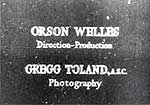 Example: The beginning of the stark credits in Citizen Kane (1941);
Example: The beginning of the stark credits in Citizen Kane (1941);
Spellbound (1945) and Who's Afraid of Virginia Woolf? (1966) are unusual in that they both don't have end credits; in the latter's case, it concludes with a placard reading "EXIT MUSIC" while soft mandolin music plays.

the period of highest tension just before the climax of a film (there can be more than one); the point at which events reach their highest level of tension
(or film critic,
film reviewer)
 Example: One of the best known and most knowledgeable film critics of all time, Chicago Tribune's Roger Ebert, known for his 'thumbs-up' and 'thumbs-down' reviews.
Example: One of the best known and most knowledgeable film critics of all time, Chicago Tribune's Roger Ebert, known for his 'thumbs-up' and 'thumbs-down' reviews.
 Examples: Porter's The Great Train Robbery (1903), D. W. Griffith's The Birth of a Nation (1915) and the finale of Griffith's Intolerance (1916), where the chase to save the pardoned hero from execution in the modern story is cross cut with Christ's procession to Calgary; also the scene in The Godfather (1972), where the baptism of Michael Corleone's godson is cross cut with the violent elimination of Corleone's multiple underworld rivals.
Examples: Porter's The Great Train Robbery (1903), D. W. Griffith's The Birth of a Nation (1915) and the finale of Griffith's Intolerance (1916), where the chase to save the pardoned hero from execution in the modern story is cross cut with Christ's procession to Calgary; also the scene in The Godfather (1972), where the baptism of Michael Corleone's godson is cross cut with the violent elimination of Corleone's multiple underworld rivals. and
cross-over appeal
 Examples: Cross-over films include Mira Nair's Monsoon Wedding (2001) - basically a film with Indian-oriented content that had wide international appeal and crossed multi-cultural barriers, and the same was true for Bend It Like Beckham (2002), Y Tu Mamá También (2001, Mex.) and Barbershop (2002). Similarly, the animated smash Finding Nemo (2003) appealed to both children and adult audiences, for different reasons. Cross-over stars include Humphrey Bogart as a romantic lead and as a hard-boiled detective, or James Cagney as a song-and-dance man and as a tough guy.
Examples: Cross-over films include Mira Nair's Monsoon Wedding (2001) - basically a film with Indian-oriented content that had wide international appeal and crossed multi-cultural barriers, and the same was true for Bend It Like Beckham (2002), Y Tu Mamá También (2001, Mex.) and Barbershop (2002). Similarly, the animated smash Finding Nemo (2003) appealed to both children and adult audiences, for different reasons. Cross-over stars include Humphrey Bogart as a romantic lead and as a hard-boiled detective, or James Cagney as a song-and-dance man and as a tough guy.  Example: A crowd shot on the streets of NY from King Vidor's silent classic The Crowd (1928)
Example: A crowd shot on the streets of NY from King Vidor's silent classic The Crowd (1928) 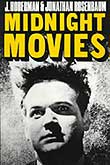 Examples: most cult films are from the horror and sci-fi genres, such as The Rocky Horror Picture Show (1975), Attack of the Killer Tomatoes! (1978), Repo Man (1984); also Harold and Maude (1971), Pink Floyd: The Wall (1982), the films of Roger Corman or David Lynch, etc.
Examples: most cult films are from the horror and sci-fi genres, such as The Rocky Horror Picture Show (1975), Attack of the Killer Tomatoes! (1978), Repo Man (1984); also Harold and Maude (1971), Pink Floyd: The Wall (1982), the films of Roger Corman or David Lynch, etc. (or cutting)

Director yelling cut!
 Examples: a quick cutaway shot of a newspaper headline in North by Northwest (1959) - after the famous crop-dusting scene
Examples: a quick cutaway shot of a newspaper headline in North by Northwest (1959) - after the famous crop-dusting scene
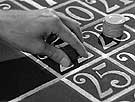
or the view of the roulette number being bet upon in Casablanca (1942)
 Examples: TRON (1982), Blade Runner (1982), Johnny Mnemonic (1995), Strange Days (1995), The Matrix (1999).
Examples: TRON (1982), Blade Runner (1982), Johnny Mnemonic (1995), Strange Days (1995), The Matrix (1999). Source: https://www.filmsite.org/filmterms7.html